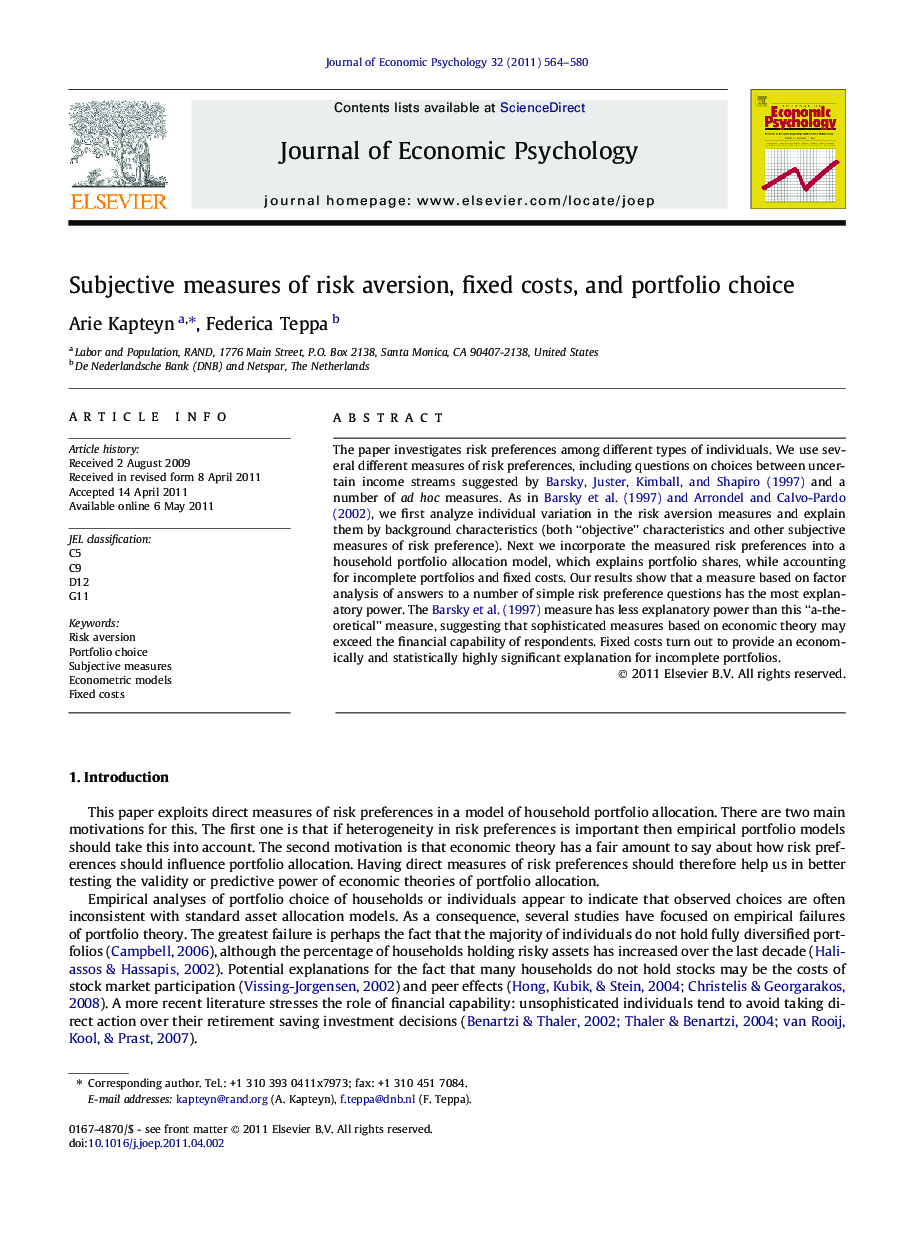| Article ID | Journal | Published Year | Pages | File Type |
|---|---|---|---|---|
| 885168 | Journal of Economic Psychology | 2011 | 17 Pages |
The paper investigates risk preferences among different types of individuals. We use several different measures of risk preferences, including questions on choices between uncertain income streams suggested by Barsky, Juster, Kimball, and Shapiro (1997) and a number of ad hoc measures. As in Barsky et al., 1997 and Arrondel and Calvo-Pardo, 2002, we first analyze individual variation in the risk aversion measures and explain them by background characteristics (both “objective” characteristics and other subjective measures of risk preference). Next we incorporate the measured risk preferences into a household portfolio allocation model, which explains portfolio shares, while accounting for incomplete portfolios and fixed costs. Our results show that a measure based on factor analysis of answers to a number of simple risk preference questions has the most explanatory power. The Barsky et al. (1997) measure has less explanatory power than this “a-theoretical” measure, suggesting that sophisticated measures based on economic theory may exceed the financial capability of respondents. Fixed costs turn out to provide an economically and statistically highly significant explanation for incomplete portfolios.
► We model household investment portfolios using directly elicited risk preferences. ► We find that simple factor analysis based risk measures explain investments best. ► Choices between lifetime earnings appear to exceed most people’s financial capability. ► Fixed costs provide a powerful explanation of incomplete investment portfolios.
